BLOG
|
|
THE 4TH WEEK OF THE 10+ WEEK TURKEY TROT 2018 TRAINING PLAN STARTS Monday. Your mileage is increasing, so getting in the Foam Roller session sometime this week becomes more important. If you have not yet performed this routine, you might be surprised at how it helps you to recover after a longer run.
Before learning about FR, after long runs I would attempt to ease post-run leg stiffness by sitting in an ice bath. I would prepare by putting on a bathing suit and a warm sweatshirt, and make a cup of hot tea to drink. I never lasted the recommended full 10 minutes in the bath. To those who think foam rolling is painful, I would argue that it in my experience it is much less uncomfortable than icing. Most importantly, I feel the rolling is more effective for me, and the icing is not. Thus, it’s the motive behind my encouraging foam rolling! It’s best to start this practice early on in training, before your soft tissues (muscles and surrounding connective tissue) significantly ‘tighten’ from repeated cycles of micro-injury and repair. At a later point in training you will likely experience exquisite tenderness (otherwise known as pain) when the tight tissues are compressed by your body weight during rolling. Recommendations have included foam rolling immediately after running and every 24 hours on subsequent days as needed up to 72 hours (3 days later), to prevent delayed-onset of muscle soreness, called DOMS. Even though you might be able to grit your teeth and endure the DOMS, another reason to foam roll is that it can help prevent injury. This may be specially helpful if you are planning to run or exercise 24-72 hours after a tough long run. A bonus of this session is that you work your arms, core, and upper body as well. Feeling a little DOMS in these areas the day afterward will be proof. If you find yourself forgetting it or skipping it due to lack of time, foam roll at least one time each week. I’ve confessed before that I find it best to hit my tightest spots (piriformis, calves, quads, back) PRIOR to a long run and then hit all areas AFTER the run. Try it, at least once, before skipping these sessions. The RESOURCES page lists some demonstrations. RUN & MOVE HAPPY! https://www.researchgate.net/publication/272165454_Foam_rolling_for_DOMS_and_dynamic_performance_measures http://natajournals.org/doi/abs/10.4085/1062-6050-50.1.01
0 Comments
SATURDAY SHOPPING: GEAR LOVE. Saturday is Race Day but it’s also the day many go shopping. Especially now that the beach is not a top destination in cooler regions of the world, brick and mortar stores and internet sites allow leisurely browsing.
For those who want to learn what’s new this season and what industry expert-reviews hype, below is a sampling of materials with athletic shoe information. They are presented, sort of, in the order I found to be helpful in viewing what’s getting the buzz this season. For running, walking, hiking. Surely there are other references. Please comment if you can add to our list. 1. Runnersworld.com. “Best Running Shoes for Every Type of Run.” Easy to scroll down. Links to full reviews; women’s and men’s versions included. Winners of categories: Best Update, Best Debut, Best Buy, Editor’s Choice (2), Road Shoes (15 shoes), Trail Shoes (9 shoes), Track Spikes (1 shoe). Links to other articles that rank shoes (i.e. kids, minimalist) “How to Buy the Right Running Shoes” Long article, plus categories: Best Running Shoes, Best Cushioned Shoes, Best Lightweight, Best Stability. https://www.runnersworld.com/gear/a20842305/how-to-buy-the-right-running-shoes/ https://www.runnersworld.com/gear/a19663621/best-running-shoes/ 2. Running.competitor.com “Competitor’s Best Road & Trail Shoes for Fall 2018” Editor’s Choice Awards – Road (3 Shoes); Editor’s Choice Trail (3 Shoes). Plus 14 additional models are reviewed in a slideshow. https://running.competitor.com/2018/09/shoes-and-gear/competitors-best-road-trail-shoes-fall-2018_174845 3. Verywellfit.com. The shoes featured in Verywellfit.com’s two articles highlight model but not the latest offerings. Not many companies hype race or performance walking shoes, so these models seem to have been on this site’s lists for a while now, at least through all of 2018, when I started searching. But it’s the best discussion that considers the needs of walking athletes. These shoes were not specifically developed for competitive walking. Am so grateful to have at least one walker shoe guide! “9 Best Top Performance Walking Shoes to Buy in 2018 (August 2018)” https://www.verywellfit.com/top-performance-training-walking-shoes-3436210 and “6 Best Race Walking Shoes to Buy in 2018”; https://www.verywellfit.com/top-racewalking-shoes-3436211 4. Outsidepursuits.com,” The 7 Best Hiking Shoes for Women- Reviewed” and “The 7 Best Hiking Shoes for Men Reviewed” https://www.outsidepursuits.com/best-hiking-shoes-women/ https://www.outsidepursuits.com/best-hiking-shoes/ 5. MensHealth.com; easy to scroll down through the sections; for men only. There are 5 top contenders that are compared across each category. Shoe sections include Performance/athletic (Cross trainers, Weightlifting, Running categories), and Casual and Dress non-athletic footwear. Also, there are several categories of a Boots section and one Socks section. https://www.menshealth.com/style/a23118472/mens-health-footwear-awards-2018/?utm_campaign=socialflowTWMH&utm_source=twitter&utm_medium=social-media 6. Bestreviews.com “Best Women’s Running Shoes”; 13 models reviewed; 5 presented/compared. “Best of the Best” and “Best Bang for the buck” were awarded. https://bestreviews.com/best-womens-running-shoes 7. ACTIVE.com. As the side ads start loading the slideshow slows down to a crawl. It’s such slow going to get through the slideshow that it’s not easy to click back and forth to compare. I did not even try. After 2 attempts I left the “trail” section, not getting to the end. The 1-32 slideshow guide categorizes footwear as “Snappy”, “Cushy,” or “Trail”. Snappy: for road or track (slides 1-13; 12 shoes) Cushy: for floating through runs with maximum cushion (slides 14-20; 6 shoes) Trail: slides 21-31 (10 shoes) https://www.active.com/running/articles/the-active-fall-running-shoe-guide?cmp=18N-PB2000-S20-T9-insider-AR3&eps=title_821131 8. Massive site that ranks all shoes: Runrepeat.com “695 Best Running Shoes” ranking by gender, top to bottom scores https://runrepeat.com/ranking/rankings-of-running-shoes RUN & MOVE HAPPY! Scientists in the UK have provided information that may help athletes who are dairy intolerant take advantage of the post-exercise recovery benefits of cow’s milk ingestion! This blog discussion summarizes an article, ”A2 Milk Enhances Dynamic Muscle Function Following Repeated Sprint Exercise, a Possible Ergogenic Aid for A1-Protein Intolerant Athletes?” published by the journal Nutrients in January 2017:
Sport participation that requires strenuous physical activity with a large component of eccentric exercise, especially if unaccustomed, “often causes exercise-induced muscle damage (EIMD)”. Although exact mechanisms aren’t well understood, it’s thought that, as a result of multiple physiological changes in the muscle, function is compromised and muscle pain is evoked after such exercise. Symptoms are known to peak at roughly 48 hours but can persist for 5-7 days. The occurrence and persistence can be detrimental in team sports, in which multiple competitions may occur during a weekly schedule and training must be resumed between competitive sessions. Research has suggested protein-rich supplements (those with whey protein, casein protein, the amino acid leucine, or other branched chain amino acids) can reduced the unwanted effects of EIMD and speed recovery. Dairy milk beverages, with a combination of protein plus carbohydrate, and that have “favourable digestible and indispensable amino-acid score (DIAAS) >1.0, have been shown to expedite recovery. The types of protein present in milk, slow-digesting casein (80%) and fast-digesting whey (20%) are though to deliver a balance of amino acids, especially the muscle-building branched chain amino acid leucine, to muscle such that signaling pathways are activated to speed synthetic processes and suppress breakdown. Athletes with dairy intolerance aren’t able to take advantage of the properties of milk that may enhance recovery after strenuous exercise. It is generally considered that lactose malabsorption is the main culprit causing the symptoms of dairy intolerance. However, evidence suggests,indicates the article, that many who report gastrointestinal symptoms don’t lack the enzyme for lactose breakdown. More recently it has been postulated that a breakdown component (BCM-7) of casein present in regular milk but not in A2 milk may be responsible for causing “motility disorders, inflammation, abdominal pain and loose stools”, and that it may interact with lactose to worsen these issues. The aim of this study was to investigate whether cow’s milk with A2 beta-casein protein was as effective as regular milk (which contains A1 and A2 casein) in lessening the effects of muscle damage when administered immediately after a specific, repeated, muscle-damaging sprint exercise. The hypothesis was that both milks would be equally effective, and that both milks would be more effective than a placebo drink (maltodextrin mixed with water). Methods: 21 male athletes, average age 23 years, who were regular participants in team sports (7=Gaelic football, 7=soccer and 7= rugby) were randomly assigned to receive a supplement after muscle-damaging exercise (15 repetitions of a 30-meter sprint, with 60 second rest between each). None had intolerance to lactose or dairy products. Seven were given regular milk, 7 consumed A-2 milk, and 7 took a placebo drink. Prior to and after exercise (at 24, 48, and 72 hours), each study participant was asked to rank muscle soreness (pain level while executing a squat at 90-degree knee flexion), and perform tests that would measure muscle function (maximal voluntary isometric contraction, countermovement jump [CMJ] height, and 20-meter sprint). Facts: Regular and A-2 protein cow’s milk (500ml) supplements that were consumed immediately after the exercise session contained:
Findings:
Limitations:
They conclude that study findings suggest “A2 milk might offer an alternative to athletes who experience GI [gastrointestinal] issues with regular milk” and that this possibility must be further investigated in those who are intolerant to A1 casein protein. I recently became aware of A2 milk while reading a January 2018 Medscape.com article (reading it requires a free signup) "A2 Milk: Breakthrough of Science or Marketing?" It indicates, “we simply do not have the data right now to determine A2 milk’s benefits, or whether they even exist”. A few other online articles have discussed this new trend with skepticism. Ally Gallop wrote a piece for the New England Dairy Council which offers a basic explanation of lactose intolerance, milk protein allergy, and dairy intolerance. Gallop cautions, “claims that A2 milk reduces dairy-related inflammation, heart disease, type 1 diabetes risk have not been supported by the science. The health benefits of A2 milk remain a theory, and more research is needed.” By the way, the “a2” brand is marketed by an Australian company. The gallon I purchased does not identify itself as organic. Before rushing to switch from regular to the more expensive A2 milk, read a bit about it. There’s still a considerable amount of scientific investigation that will be required before that big question “Is it better for you than regular milk?” can be asked or answered. The most important lesson to take from the EARNED RUNS BLOG post and the references: dairy milk is an ideal protein recovery food for strenuous post-exercise muscle maintenance, and source of calcium, fats, and other vitamins and minerals. In subsequent posts, we will hopefully examine the science that indicates dairy provides significant benefits when it comes to building and maintaining bone health for the BONE STRENGTH FOR ATHLETES page Athletes who consider themselves milk intolerant and omit dairy from their diet may wish to test A2 milk. RUN & MOVE HAPPY! https://core.ac.uk/reader/ https://www.medscape.com/viewarticle/900365. http://theconversation.com/science-or-snake-oil-is-a2-milk-better-for-you-than-regular-cows-milk-62486 https://www.newenglanddairycouncil.org/whats-a2-milk/ SOME WEEKS SO MANY GOOD TO GREAT ARTICLES AND NEWS ITEM APPEAR ONLINE that It’s tough to keep track of them all, then prioritize those which are most helpful and deserve mention in a blog post. Other weeks, the materials that come to attention possess click-bait titles but seem mostly empty of real information.
A few have limited scope but practical application. They are ‘filed’, for the purpose of later being combined with other ‘nugget’ of advice articles in a post covering a broader topic. Oftentimes these themed posts are never written, because there’s just not enough time. Fitness-industry companies often tweet articles or send newsletters containing a week’s worth of these items written by talented writers. This is mostly how I discover them. It’s a good idea. I click on the ones that interest me. As a trial this fall, each Wednesday’s blog post will feature “Selected Readings”; titles with links to a group of articles. The name comes from the practice in medical training programs of assigning scientific articles for resident doctors to read, to further their knowledge and help learn. Of course, these “Selected Reading” won’t have such a lofty purpose. They’ll just be items you might find useful or entertaining. Week Sept 22-29 Yet another article that supports walking as cross training as well as a stand-alone activity: “The One Crucial Exercise You Need in Your workout Routine” by Jackie Veling for ACTIVE.com https://www.active.com/fitness/articles/the-one-crucial-exercise-you-need-in-your-workout-routine Nutrition experts continue to investigate whether certain saturated fats might be healthy; more data analyses from the multinational PURE Study “Is Whole fat Dairy Good for the Heart?” by Nicholas Bakalar for NYTimes.com WELL blog https://www.nytimes.com/2018/09/11/well/eat/is-whole-fat-dairy-good-for-the-heart.html https://www.thelancet.com/journals/lancet/article/PIIS0140-6736(18)31812-9/fulltext This Mike Donavanik routine is controlled and hits the posterior chain without stressing the knees; good for those without knee issues too. “Best Glute Exercises for People with Bad Knees” https://www.shape.com/fitness/videos/best-glute-exercises-if-you-have-bad-knees Epic Adventure: for runners who admire cyclists and wish there was a footrace like a certain famous French event, and cyclists who appreciate an out-sized challenge, by Peter Flax for cyclingtips.com “Marathon Effort: The Story Behind the Man Who Ran the Tour de France” https://cyclingtips.com/2018/08/marathon-effort-the-story-behind-the-man-who-ran-the-tour-de-france/ GEAR: New Fall colors from Tracksmith.com for those who love old-school maroon, forest green and navy apparel https://www.tracksmith.com/collections/new-arrivals Hope you find something that inspires, excites, motivates you. RUN & MOVE HAPPY NOW THAT SOME OF YOU HAVE STARTED TURKEY TROT TRAINING, do you know how to use a foam roller? The very first direction on the WALKER plan, scheduled on September 10, was to learn, and RUNNERS have it listed as a plan activity every Sunday.
To receive the full benefit of foam rolling (decreased delayed onset of muscle soreness and improved range of motion and flexibility) this routine ideally should be performed after every tough workout. Earned Runs hoped that a once a week session would lead to more! Not yet convinced that getting on the floor and punishing yourself is a good idea? You might have heard the process doesn't feel good while being performed. Consider borrowing this piece of relatively inexpensive equipment and testing it before rejecting it's use during training. A 2018 VeryWellFit.com article by Elizabeth Quinn describes when and how to use a foam roller. Although demonstration is not provided, the instructions may be helpful to those who like to read about proper technique before attempting a routine. Moves to roll the gluteal and hamstring muscles along the body's posterior, the quadriceps muscles of the anterior thigh, the ilio-tibial band of the lateral thigh, the calf muscles, and the upper back muscles are detailed. The Earned Runs RESOURCES page has links to videos from other sources. Previously, Earned Runs posted a piece about foam rolling, and how it may work to increase joint range of motion and flexibility. It has been updated (see below). Perhaps the knowledge that tissue is NOT being damaged by rolling offers more encouragement to try it. A RUNNERSWORLD.COM ARTICLE, "The Truth About Foam Rolling: It works but not for the reason you think” by Michael Easter for Men’s Health (first appeared there), begins by saying that many “believe that foam rolling works by steamrolling your muscles, breaking up scar tissues and lengthening the muscle tissue.” That caught my attention. Guilty. Doug Kechijian, a doctor of physical therapy at Peak Performance in New York City was interviewed by the author in this piece. He explains that foam rolling doesn’t physically alter the muscle itself, but rather works by signaling to the nervous system that it’s OK to allow tight muscles to relax. I did not see a reference provided for this particular view in the scientific literature to support the mechanism that was described. However StrengthandConditioningResearch.com investigated the reasons behind the increased range of motion/joint flexibility associated with self-myofascial release (a term for foam rolling). After a detailed discussion, it concluded that "current best evidence supports a neurophysiological mechanism", which agrees with Kechijian's remarks. Easter's Men's Health article also mentions studies that demonstrated benefits to foam rolling before or after runs or intense workouts. If you were waiting for convincing reasons to start rolling, Easter provides easy-to-understand information on the topic that might do the trick, regardless of the underlying specific physiological mechanisms. Those with a desire to read more about how foam rolling/self-myofascial release works, should fully check-out the StrengthandConditioningResearch.com piece. Chris Beardsley apparently was the initial contributor; Andrew Vigotsky is also given credit as a subsequent reviewer and for comments. A 2015 Journal of Bodywork and Movement Therapies review by Beardsley covered this topic. A coach once suggested I perform a foam rollout BEFORE running because of my ongoing calf problems. It worked to relieve stiffness all over. Now I am a fan of pre- and, as needed, post-workout rolling for walking and cross training. The most enjoyable portion of the session is the back muscle rollout. It's a wonderful training tool. RUN & MOVE HAPPY! https://www.verywellfit.com/how-to-use-a-foam-roller-3120309 https://www.strengthandconditioningresearch.com/foam-rolling-self-myofascial-release/ "In neurophysiological models, which are now becoming more widely accepted than the older, mechanical models, myofascial release is thought to stimulate intra-fascial mechanoreceptors, which cause alterations in the afferent input to the central nervous system, leading to a reduction in the activation of specific groups of motor units. In this way, myofascial release does not affect the physical properties of the muscle or fascia but rather sends signals to the brain through afferent nerves, which then signals to the muscle to relax its excessively contracted state. As noted above, this model assumes that muscle tissue is responsible for the tightness and that it is muscle tissue that is being changed by treatment." https://www.sciencedirect.com/science/article/pii/S136085921500217X http://www.runnersworld.com/foam-roller/the-truth-about-foam-rolling WEEK 3 TURKEY TROT 2018 TRAINING STARTS FOR RUNNERS preparing for a 5K race and for WALKERS working toward participating in a 5K (and potentially 10K) race.
Runners: if you did not start utilizing the optional track day plan but have reconsidered and want to try it, or struggled making it to the track the first two weeks, it’s not too late to get organized. Runners or walkers: if you have not identified specific exercises to perform during strength sessions, or cross training activities, it’s not too late to get organized. The key move is to get organized before sessions are scheduled. Better to skip a walking or running session now and use the time to locate a track or search for three upper and three lower body strength exercises. Practice taking a lap or two on the track. Try out the exercise moves beforehand. Get the “feel” of any unfamiliar work that’s planned. Mark the schedule at least 2 weeks in advance with the details. Later in the program the stresses of longer and harder training will not leave much time or enthusiasm for this kind of experimentation and orientation. The extra work done early on will help form good training habits. If you spend the first three weeks of training only performing the running/walking sessions, but skipping the foam rolling, mobility, strength, cross training, or stretching sessions, it is unlikely you’ll start them later. This supportive work will help prevent minor injuries that may keep you from competing on race day. This week the runners' track day schedule advances from walking: running half laps to full laps! It was amazing to me how far that quarter mile (one lap) felt the first few trips around. The distance will seem to ‘shorten’ as you become accustomed to the track environment. It’s hard to imagine, but you might need to devise a way to count laps as the number completed increases, and your mind starts to wander onto topics other than discomfort and exhaustion. “When can I walk again?” becomes, “Oops I missed the walk mark!” One thing to keep in mind is that all the effort expended and miles run or walked in following THIS training plan becomes part of the base you’ll establish for FUTURE runs of the same or longer distances. Many runners train at a lower level almost ALL YEAR long, not just in advance of a specific race, so that the agony of starting from zero preparedness, after months completely off is avoided. For example, the weekend long run/walk might be maintained at a distance of 3-5 miles most weeks if runs/walks of 1-2 miles are performed several days during the week. Consider mentally adjusting your goals early to thinking you’ll maintain a minimum weekly mileage AFTER competing the 2018 Turkey Trot 5K race, to be ready for the NEXT RACE. RUN & MOVE HAPPY! Remember, go to the RESOURCES page for all Turkey Trot 2018 Training related downloads: - 2018 TURKEY TROT 5K Training Plan Calendar (beginner runners) - WALKING PLAN TURKEY TROT 5K-10K Calendar - Optional TRACK DAYS schedule - MINUTES TO MILES Calculations AUTUMNAL EQUINOX AND THE ‘NORTHERN LIGHTS EFFECT’. Thursday September 22 is the 2018 date of the Autumnal Equinox in the Northern Hemisphere. The article “September Equinox: 10 Facts About the First Day of Fall” from Timeanddate.com provided some bits of information about this astronomical event that surprised me; specifically fact No.9. It states, “the chances that one can catch the aurora borealis (northern lights) display increases for those located at high Northern Hemisphere latitudes.” It goes on to say that, “according to NASA, the equinoxes are prime time for Northern Lights – geomagnetic activities are twice more likely to take place in the spring and fall time, than in the summer or winter.”
There are 9 other facts, some being more familiar than others; check them out in the article to see if there are surprises for you. The increased likelihood of seeing the Northern Lights around the time of the September equinox is a plus, something to rejoice in. No matter that at lower latitudes, which could apply to my location, the chances of visualizing the phenomenon may not be as good. The fact alone adds a bit of shine and creates a slightly brighter attitude toward the season’s turn that’s replaced a usually glum anticipation of the coming of Fall. I don’t really know why it's happened; suddenly I am looking forward to later sunrises and not upset by earlier sunsets. Weird. Maybe it’s an effect of the invisible geomagnetic activity that brings the Northern Lights? Here’s a short list of some other potentially positive running/walking/fitness-related aspects to the coming of shorter days and longer nights:
What would you add to this list? RUN & MOVE HAPPY! https://www.timeanddate.com/calendar/facts-about-september-equinox.html BECAUSE THE EARNED RUNS PAGE “BONE STRENGTH FOR ATHLETES” will attempt to post scientific information about maintaining and possibly improving bone health in athletes, it seemed like a good idea to start building it on a foundation of basic information. The Science Friday blog is a perfect “venue” on which to post science-heavy articles.
An article, “Bone Biomechanical Properties and Changes with Osteoporosis” may be one such basic learning resource. It describes the nature of normal bone and begins to discuss what is known to change with bone loss, as occurs with osteoporosis. It is summarized below in Part I. Be aware that, to not misrepresent what was written in the article, a good portion of the summary is lifted word for word by Earned Runs. You are encouraged to read the entire paper. However, this one piece doesn’t fully explain how bone strength is determined or measured. Another basic article “Mechanical basis of bone strength: influence of bone material, bone structure and muscle action” reviews other fundamentals. It is quite lengthy and detailed. Earned Runs is hoping to acquire knowledge of the science of bone health so as to better understand additional literature that applies specifically to athletes, thus, much of the summary quotes the article directly but arranges it in outline form. Exact wording is maintained to avoid inadvertent change in meaning. These articles may be frequently referenced as other materials are discussed or posted on the BONE STRENGTH FOR ATHLETES page. Earned Runs tried its best to present the information in the articles to this post,but understanding will be greatly improved by reading the original source articles too. Because of the length of the discussion, the remainder of this post can be read (click "Read More") below, or the PDFs of Part I and Part II can be downloaded by clicking on the titles. Discussion: Part I: “BONE BIOMECHANICAL PROPERTIES AND CHANGES WITH OSTEOPOROSIS” By Georg Osterhoff, Elise F. Morgan, Sandra J. Shefelbine, Lamya Karim, Laoise M. McNamara, and Peter Augatg Article: Injury. 2016 June; 47(Suppl 2): S11–S20. doi:10.1016/S0020-1383(16)47003-8. Discussion Part II: “MECHANICAL BASIS OF BONE STRENGTH: INFLUENCE OF BONE MATERIAL, BONE STRUCTURE AND MUSCLE ACTION” by N.H. Hart, S. Nimphius, T. Rantalainen, A. Ireland, A. Siafarikas R.U. Newton Article: J Musculoskelet Neuronal Interact 2017; 17(3):114-139 THE FIRST PORTION OF THE TWO-PART ANNUAL EARNED RUNS HONOR SERIES is the "11k Race to Remember 9/11". My 4TH personal observance was last Tuesday. The second portion of the series this year will be December 7, 2018.
FROM THE HOME PAGE: “The Earned Runs HONOR SERIES is an effort I make each year to commemorate two different but life-changing events that helped to define generations of Americans. For the initial run, Earned Runs bibs had not yet been delivered in September, in advance of the October 1, 2015 launch of the website. I did not run wearing a bib. Since 2016 I have used the last of my 4 personal bibs to mark these September and December events, and to make them official and special for myself. In 2017 the running 'races' were changed (walked in stages) to accommodate my recovery from an injury. Deciding to competitively walk rather than run going forward after the injury, both 2018 commemorations will also be walks. That's the beauty of personal events; accommodations can be made, almost on the spot, to altered circumstances. An event needn't be scrubbed when conditions or situations change.” “This September represents the fourth year (the INAUGURAL year of the SERIES was 2015) in which I memorialized the anniversary of the World Trade Center terrorist attack, with an 11K event. After spending 6 months, September 2017 to February 2018 in rehabilitation and recovery from a knee/calf problem and not running since then, I was able to walk the full 11K distance yesterday. Last year I walked 5.5K each day, on September 11 and 13 for a total 11k distance in stages.” “My walk this year was performed to establish a base pace that would hopefully improve over the next couple months of training, in preparation for a competitive late November Turkey Trot walk. It was not a race. My times for each mile weren't great; the fastest was more than 1.5 minutes slower than my best pace established on August 6, 2018. A disappointment. So was the weather. It should have been clear but fog made visibility very poor. The picture that was taken came from a glorious early walk on the following morning September 12.” SUMMER IS OVER: The first part of the Honor Series bookends the Summer Challenge season, which concluded on Labor Day Monday September 3, and the start of the Fall Challenge season, which began with the first official day of Turkey Trot Training on Monday September 10. It’s one of the best times of the year in my opinion. This period of seasonal transition offers a wonderful opportunity to congratulate yourself for the accomplishments of the summer and use them to fire up for autumn training and events. “YAY” to those who completed a STREAK or the RUN/WALK/BIKE ACROSS AMERICA 2018, from Memorial Day to Labor Day. A vigorous, celebratory "fist pump" for all who managed a FASTEST 5K or Summer of Fun 5Ks, the HIIT training SERIES SWEEP 4 of 7 days each week, or the 6-week OBSTACLE COURSE TRAINING. Hopefully, the BUDDY-UP challenge helped some make enjoyable social connections. If any of your challenges ended prematurely, give yourselves credit for the effort, but determine to carry thorough on next season’s fall training and challenges. Think back and recall past summers in which the weeks slipped by without much notice, when specific goals were not set or achieved. This is not to say everyone receives a participation trophy for just trying. If you want a prize at the end of the upcoming season, it must be earned with hard work. Take what can be learned from the summer, and apply it moving forward to have greater chance at success. No whining. Personally, I had more or less difficulty with several of my challenges. In order to keep a mile-a-day walking Streak intact while traveling on a train I used a step counter to identify a mile. On other travel-days I needed to employ the same tactic. It wasn’t satisfying, but the task was “technically” accomplished. During some weeks of the Across America Challenge all the miles I had covered in each and every challenge were used to satisfy the mileage requirements. That also seemed like a cheap way to get to the next route segment. But I surprised myself by completing the full 6 weeks of Obstacle Course Training, managing to perform all exercises except 2: pull-ups (hang-time was substituted) and burpees (I performed plank step-outs + bench step-ups instead). My greatest success was finishing a Fastest 5k walking event on August 6 when my times was slightly better that an almost out-of-reach, lofty goal. The HIIT Series Sweep challenge helped provide speed work days for this event; these walks were faithfully completed each week. Also, I had at least 14 weekly wonderful Buddy-up sessions with family and friends, that are now a regular part of my walking training. That was a lot of work, and I’ve got the bib log notations and stickers to prove it! Glad and sad to be done with summer challenges. On to 2018 Turkey Trot Training and The House Cup. RUN & MOVE HAPPY! DIETITIANS LOOK BACK AND GIVE THEMSELVES ADVICE. In an article for Under Armor’s MyFitnessPal blog written by Julia Malakoff, eight professionals share “what they wish they could have told themselves 10 years ago, "about what it really means to eat healthy”.
HAVING BEEN TRAINED IN DIETETICS AND WORKED AS A REGISTERED DIETITIAN for 3 years I wondered what I would have answered if asked this question. I can’t claim to have the same perspective as those who have practiced in the field for a decade or more. But I can look back after my medical and pathology training, years of work as a surgical and then pediatric/placental pathologist, decades of research focused on learning about the origins of preterm delivery, and attempt it. After all, I had learned about and observed the effects of diseases on the body, including those with a dietary component like diabetes and cardiovascular disease, with a knowledge of and interest in nutrition. First off, I read the 10 points in the article and found that these fitness-centered dietitians had opinions very similar to mine. The points made are solid and can provide guidance for most individuals hoping to make dietary changes that will contribute to a healthy lifestyle. The entire article is worth a thorough read; some highlights include: 1) nutrition advice which points to one food or food type as bad, to be totally avoided, or good and emphasized above all others, should be questioned. Foods are best enjoyed in moderation/small amounts; 2) a nutrition plan that works for one person is not necessarily going to fit all; extensive experimentation may be required to determine best practices for individuals; 3) setting extreme goals and instituting extreme dietary changes isn’t likely to be a successful strategy for weight loss or maintenance. Earned Runs thinks this applies to physical activity and exercise plans to achieve weight loss as well. My contribution as a former dietitian and longtime pathologist builds on points #1 by Amy Goodson that no one food is bad, and #9 by Hannah Meier R.D who reminds us that there is more to a healthy diet than consuming fresh produce. “Our bodies perform best with a balance of fruits, vegetables, proteins and healthy fats, and this balance can look different for every person and every culture” she is quoted as saying in the article. Although there’s a tendency to concentrate on eating habits that would help us to attain a slim and trim form, strength and function are important from youth to old age. Daily protein requirements have been set to insure intake is sufficient to build and maintain muscle and bone as well as all other body components and structures. Essential fats and vitamins vital to the proper functioning of many physiological systems are found in protein sources. Meat, fish, seafood, eggs, and dairy products should not be shunned because they are thought to be inherently ‘bad’ foods. Plant sources complemented by other foods can provide complete proteins, but are not the only healthy alternatives. Philosophical, religious, and cultural preferences might guide our choice of protein sources, but misconceptions should not. In recent years, the decades-long US emphasis on low-fat diets for the promotion of cardiovascular health have come under increasing scrutiny. Some experts contend that a move to lower dietary fat in America and the rest of the world may have led to unhealthy increases in the amount of sugar and calories in food, originating from processing changes, and to obesity (as in the Snackwell's Effect). Studies, like PURE, which involved 18 countries in five continents, are providing new information that may change our thinking and practices. It revealed that “total fat and individual types of fat were related to lower total mortality.” Current RDA Guidelines call for 0.8 grams of high quality protein per kilogram of body weight for both men and women. It is difficult to find a reference or health article that doesn’t caution against too getting much protein, and doesn’t recommend limiting total fat and saturated fat in the diet. But higher levels may be needed with aging when intestinal absorption is reduced and lean muscle mass is lost (sarcopenia), in part related to decreased physical activity. Bone strength diminishes with age, especially in women. Because of the finding of newer scientific investigations like PURE and that realization that American obesity rates haven’t been reduced by the actions of government and health organizations to lower dietary fat, hopefully we will see more discussion on the topic of saturated fat and the protein sources in which it is found. You heard it here! RUN & MOVE HAPPY! https://blog.myfitnesspal.com/10-things-dietitians-wish-they-could-tell-their-younger-selves https://academic.oup.com/jhmas/article/63/2/139/772615 https://www.pbs.org/wgbh/pages/frontline/shows/diet/themes/lowfat.html https://www.ncbi.nlm.nih.gov/pubmed/28864332 Lancet. 2017 Nov 4;390(10107):2050-2062. doi: 10.1016/S0140-6736(17)32252-3. Epub 2017 Aug 29. “Associations of fats and carbohydrate intake with cardiovascular disease and mortality in 18 countries from five continents (PURE): a prospective cohort study.” “Interpretation: High carbohydrate intake was associated with higher risk of total mortality, whereas total fat and individual types of fat were related to lower total mortality. Total fat and types of fat were not associated with cardiovascular disease, myocardial infarction, or cardiovascular disease mortality, whereas saturated fat had an inverse association with stroke. Global dietary guidelines should be reconsidered in light of these findings.” https://www.nap.edu/read/10490/chapter/12 https://www.washingtontimes.com/news/2018/may/14/umn-nutritionist-presents-a-fat-problem-for-modern/\\https://www.nap.edu/read/10490/chapter/1 https://www.health.harvard.edu/blog/how-much-protein-do-you-need-every-day-201506188096 WEEK 2 TURKEY TROT TRAINING PLAN BEGINS Monday. It's only the second week, but you should be feeling good about starting! Think back to all the previous times you intended to make this commitment but backed away.
After this 7-day period is finished, training will be becoming a regular part of your days, a habit! By this time, you should also be able to recognize whether the plan fits your schedule. The WALKER long sessions fall on Sunday; for RUNNERS, it’s on Saturdays. Shift the calendar week one or more days as needed to make that day enjoyable. If it is, as the 3rd week commences you might start to look forward to those long easy paced walks or run/walks Especially if you get out early and plan ahead to finish with a stop at a special coffee shop, or to come home to perform post-run stretches with a favorite hot or cold beverage waiting. This week the strength session targets the upper body. Are you looking at the schedule and wondering if the upper body strength (UBS) exercises might be skipped? One of the best ways to insure you will incorporate them into your routine is to determine in advance the specific moves you will be using to work out. If this part of the plan is a MENTAL CHALLENGE (you dread working out with your arms, the moves seem too complicated; no runners or walkers you know do them, etc.) why not start with just 2 bodyweight exercises. Bodyweight exercises by definition are performed without equipment, and thus can be done in a variety of places other than a gym. Another option is to save this work for another time in the week. My favorite method for NOT skipping UBS exercises is to perform several after a run, before I allow myself to go home. I do 3 total sets of dips on outdoor park benches or walls, alternating each set immediately with a set of push-ups, on the ground next to the bench or wall. If there are 3 different benches along the path it's a great break to walk briskly between them. If not, I walk a short loop and circle back to the same bench I begin with the greatest number of repetitions that I can perform with good form, and decrease the number on the next set, and then decrease more on the final set (30, then 25, then 20 for example, or 20, 15, 10, or 10, 7, 5). The beauty of this tactic, borrowed from others, is that the very 'worst' is over first! If possible, add planks to the mix and you'll be working on your core as well. The RESOURCES page has links to help you find UBS, core, and LBS exercises some with video demonstrations. Good luck. Remain firm in your commitment. Think of the tradition you are preparing to enjoy on Thanksgiving, with thousands of other runners. RUN & MOVE HAPPY! IF TRAVELING FOR THANKSGIVING DO YOU WANT TO FIND A TURKEY TROT WALK/RUN FOR WHICH TO REGISTER BEFORE ALL THE T-SHIRTS ARE GONE? Or are you staying home and want to find the best in the region, because family and friends will want to join the fun? There are more scenarios that could describe your situation if it involves finding an event in the future, like coming up in November, or this very next weekend.
You could seek the advice of a runner, walker, or cyclist* in the area. Or visit the local running/cycling specialty store and search for flyers. Most of us would simply search online with basic terms identifying the town, event type, distance, and date. However, here are a few other searchable options that I tested for one specific date, November 22, or by entering terms “Thanksgiving Day races” or “Turkey Trot”. I gave each my best effort at searching, only looking to identify foot races, but some sites listed additional sport events if other competitions are of interest. Keep in mind that your search skills may surpass mine, and the specific site will be of greater help to you than indicated by my comments. The idea is that if you try hard, there might be just the perfect event for your purpose in the location, and on the date, that is desired. 1. EARNED RUNS competition bibs are, of course, PERFECT for designing/creating a custom event in exactly the location of your choosing!!! Request them at any time. You will receive 4. http://www.earned-runs.com/request-bibscontact.html 2. Event finder sites:
3. Race management company sites:
4. Specialty store websites (there are, of course, many others; I chose two as examples) Examples:
5. Local YMCA websites (there are, of course, many others; I chose one as an example) Example: https://www.ymcaswm.com/races/TDR 6. Phone app (This is the only app of which I’m aware that serves this purpose) Kukimbe.com http://www.kukimbe.com/- Not that easy to use. To swipe to get through many events was time consuming. Limited locations to search. 7. Miscellaneous https://www.bibrave.com/search - A race will only be listed if the is a bib to be gotten. But this may be of help if the race you decide upon is popular and registration closes quickly. Good luck with the hunt for an upcoming that perfectly fits your needs. RUN & MOVE HAPPY! *Not being an insider when it comes to cycling, this list may be of only limited help to this group. DO THE MATH! If you have just begun to train for an upcoming fall endurance race or plan to start soon for a Thanksgiving weekend Turkey Trot those long steady walks or runs will likely get you on track to lose weight before the holidays, right? More calories burned in exercise can help create a calorie deficit, that will lead to lost body weight, right?
Maybe. A previous Summer Science Friday post revealed that those who ‘overcompensate’ for the energy that is expended during exercise tend to not lose as much weight as expected or may gain weight. Overcompensation occurs when, in response to exercise, food intake is increased and time spent at non-exercise physical activity decreases. In effect, we erase the benefit (in terms of calorie deficit) that was created by the exercise. An article from the NYTimes.com WELL blog discusses another scientific study that revealed similar results with respect to food intake compensation. Researcher Dr. Kyle D. Flack and colleagues from the University of North Dakota and other institutions wanted to learn if exercise alone could lead to weight loss even if participants compensated for the extra activity by eating more. Thirty-one sedentary, overweight women and men, aged 18-49 years old, were invited to join the project and 29 completed it. For 12 weeks, having been instructed not to alter their diets or lifestyles, about half of the group (14) aerobically exercised 5 days per week, such that they burned 300 calories per day (1500 calories total/week), about 30 minutes/session. The remaining 15 participants exercised twice as much, burning roughly 600 calories per day (3000 calories per week), about 60 minutes/session. Each were prescribed a customized 5-day exercise plan, which included 2 lower intensity sessions and 3 interval sessions, that was based on an initial heart rate-zone training assessment session. When analyzed as a group there was no significant loss in fat mass or percent body fat in the 300cal/day exercisers; half of the individuals showed some decrease. Of the 600cal/day group, 80% lost fat mass, and significantly more than in those in the 300 cal/day exercisers, some greater than 10%. Curiously, both groups ‘compensated’ by taking in about the same number of additional dietary calories (943 and 1007 respectively) per week. The GOOD NEWS message is that body re-composition in terms of fat mass loss is possible in persons who under- rather than over-compensate for the energy expended in exercise. However, it will likely require a higher level of weekly exercise-generated calorie burn to beat the usual dietary compensation that occurs. Roughly twice the level recommended by the CDC (it advises 150 minutes/week), at least 300 minutes, over 7 days. The study authors admitted, as usual, the limitations of their work (too few subjects, too short a duration, no attempt to identify gender/racial/ethnic differences, not measuring or accounting for other factors, difficulty of tracking diet changes with recall, etc.), but the results it generated are encouraging. Perhaps we cannot help bumping up calories taken in because of exercising, but this work suggests we might be able to overcome the response with a bit more effort working them OFF. Possibly there is a limit to how far our own bodies will go to sabotage fat loss attempts without our complete awareness. The participants did not report eating more in their food diaries, seemingly not recognizing they did so. Other potentially GOOD NEWS might come from the exercise part of the fat loss equation; certain types of exercise may turn up the calorie burn after physical activity. Discussion of an EPOC, or Excess Post-Exercise Oxygen Consumption, research study informs us that resistance training and higher intensity intermittent aerobic training can provide a longer calorie after-burn when compared with steady state aerobic exercise performed at continuous, unvarying, moderate intensity, if the exercise duration and amount of energy expended is the same. Post-exercise calorie burn, identified as a higher resting metabolic rate (RMR) in the study, continued at 12 and 21 hours after resistance or interval training had ceased, at the rate of about 12 calories/hour above that seen with steady state exercise (other studies indicate EPOC can continue up to 48 hours). Doing the math means that (21 x 12) 252 is possibly the number of additional calories can be burned almost one day after exercising. Let’s switch back to the North Dakota study initially discussed in this post. It found that regardless of exercise duration (30-minute versus 60-minute sessions x 5 days/week), the amount of calculated weekly food intake compensation was roughly equal to 1000 calories for all participants. Thus, if exercisers take advantage of EPOC, and perform 4 sessions of the tougher, higher calorie ’after-burn’ activity, like resistance and/or interval training, inadvertent extra food intake/increased appetite could nearly cancel out the benefits. Or, with training adaptation, exercise efficiency can attenuate EPOC effects. It’s an exaggeration, but the point is that no matter how much we fine tune our exercise sessions in order to change body composition, such that fat mass is decreased (the reason to “lose weight” for many) we can override the burn with increased dietary intake or with reduced non-exercise activity.. The initial intent of this SCIENCE FRIDAY post was to cover the science of EPOC and discuss new research, in order to help myself and others plan fitness programs. It was a bigger subject than I realized. After getting deep into the details, it seemed to me that traditional advice might still be given but with a new perspective: Research (above) suggests that exercise duration must be as long as an hour/day on 5 days/week over 12 weeks for it to be effective in assisting with body re-composition/fat loss efforts, such that an almost subconscious tendency to eat more after exercise can be overcome. [The subjects in the study did not report eating more, but their body composition data plus analyses indicated intake had increased]. If true, exercisers will need to persevere over a much longer time, especially to maintain body changes into the future. We will need to enjoy, even LOVE, this exercise in order to work at it for an hour on most days of the week. As has been said many times, the best exercise for each of us is the form that we can stick with over the long haul. Activity we happily anticipate. It could be steady state running or elliptical work, HIIT speed walking, an aerobics jazzercise class, cycling studio session, lap swim, or strength training routine. A mix of many different activities is ideal, if we listen to the advice of trainers. However, care must be taken to avoid unrecognized food over-compensation that might derail attempts to preserve lean muscle mass and shed fat mass though physical activity. The hopeful news to be taken from scientific work is that it may be POSSIBLE to exceed these compensatory responses by bumping up exercise duration! The final word on the complex subject of using to exercise to assist with fat loss, often the origin of much discouragement when we gain weight after starting a tough training program, is mindfulness. Yes, it is an overused term lately. However, when it comes to physical activity, being mindful of the body’s likely response can be one defense against an unwanted outcome. Do the math, or at least understand it; calories taken in shouldn’t exceed those burned in exercise if, over time, fat pounds are to successfully be subtracted rather than added. RUN & MOVE HAPPY! https://www.nytimes.com/2018/07/04/well/exercise-may-aid-in-weight-loss-provided-you-do-enough.html https://www.physiology.org/doi/pdf/10.1152/ajpregu.00071.2018 https://www.ncbi.nlm.nih.gov/pubmed/25675374 NOTE: An article by Amy Schlinger for Under Armor’s MyFitnessPal.com blog explains Excess Post-Exercise Oxygen Consumption, or EPOC nicely. https://blog.myfitnesspal.com/your-secret-to-burning-more-calories-at-rest/ BE KIND TO THE EARTH and YOURSELF; stop using disposable water bottles. “TAKE BACK THE TAP”9/12/2018 EARTH DAY OFFICIALLY FALLS ON APRIL 22 EACH YEAR. The half-year mark will be coming up on October 22. Consider celebrating the halfway holiday. Treat Mother Earth, and your own body, with a little extra TLC by ceasing use of disposable plastic water bottles, if you still do so, by that day, and drinking water from the tap.
Brittany Risher wrote a convincing article for Under Armor’s MyFitnessPal.com blog, “The Benefits and Impact of Ditching Disposable Water Bottles.” Risher separates benefits of not using plastic into those that have a positive effect on the environment and those that may help you physically. On the environment side: wildlife protection, reduced air pollution, waste reduction, decreased energy usage, water supply defense. On the personal health side, that mostly are related to avoidance of low levels of dehydration: improved workout performance, fewer headaches, help with constipation and possibly weight loss, and better mood. Financially: it costs less to drink water that isn’t purchased in bottled form. Risher offers more specific information on each point that is bound to be more convincing than this simple summary of her info-graphic article. The item that grabbed my attention had to do with water bottling facilities, the last of her piece. “Bottled water facilities deplete community water supplies and can harm resources used for drinking water, farming, recreation and other uses”. She doesn’t offer a reference to back up this claim or others in her article. Earned Runs found a recent report from foodandwaterwatch.org that highlights the population health risks and environmental and financial costs associated with producing and consuming bottled water, and eliminating plastic container litter. The report makes the argument that in the state of Michigan at the time of the report, Nestle annually pays an annual $200 water use fee and a one-time $5000 application fee to extract millions of gallons of water near Osceola Township. This is in contrast, the report says to high water service fees paid by residents, in some instances in cities with contaminated water systems like Flint and Detroit. Nestle sought and was granted permission to expand operations in 2018, increasing water withdrawal from 250 gallons per minute to 400 gallons per minute despite public outcry and disapproval. The same report indicates that during the California drought, 2011 to 2014, Nestle continued to pump water, increasing its use by 19% over these years and paying an annual fee of $524 to the state for the permit. If you’re thinking bottled water is safer than tap water the report has some conflicting information. Over the past 15 years there have been 35 safety recalls, as recent as 2014, 2015, and 2017. Other issues exist with regard to contaminants fro plastics. The Food and Water Watch report is entitled, “Take Back the Tap”. Considering that roughly 63% of bottled water IS TAP WATER and is not spring water, we might want to do so. We pay about a 2000% more for the bottled version. Tap water is approximately $.005/gallon, the average cost of bottled water translates to $9.50/gallon. At that mark-up rate, it’s possible that decreased demand for bottled water, by drinking it from the “tap” instead, will decrease corporate profits and lead to the closure of such facilities. There is need to fund improvements in infrastructure that help guarantee safety, access, and trust in water, the report says. And switching to drinking tap water can be a personal cost saving move that encourages private support for public projects. Why not celebrate “halfway” earth day in 2018? Prepare by testing a few alternatives to disposable bottles, for use away from home, at work, and for sport. Set October 22 as the date to break free and join the movement to “take back the tap”. RUN & MOVE HAPPY! https://blog.myfitnesspal.com/the-benefits-and-impact-of-ditching-disposable-water-bottles/ https://www.ecowatch.com/bottled-water-sources-tap-2537510642.html https://www.foodandwaterwatch.org/sites/default/files/rpt_1802_tbttbigwaterhustle-web.pdf https://www.freep.com/story/news/2018/04/02/michigan-oks-nestle-permit-increased-water-withdrawal-bottled-water-plant/479896002/ https://www.huffingtonpost.com/entry/the-highest-rated-bpa-free-water-bottles-on-amazon_us_5a81cf16e4b044b3821feed7 JOIN THE FKT COMMUNITY; ESTABLISH A PERSONAL “FASTEST KNOWN TIME” AND BE CONTENT An August 2018 article written by Whitney Spivey for running.competitor.com introduced me to “fastest know times” and the fact that there are people across the globe interested in setting them. It identified FastestKnownTime.com as a website that tracks the efforts of athletes taking on running and hiking challenges. The homepage world map shows the USA as having the most FKT routes; other concentrations are seen in Europe and the United Kingdom.
Additional pages include: “Routes”, “Athletes”, “Articles”, “Add an FKT”, and “More” (FAQ, FKT Guidelines, FKT Verification, The Team, Support this site, Contact). The list of “Latest FKTs” starts with the current month and extends back, 166 pages (10 entries per page), to the early 1960’s. Alex McPhail’s name is posted for completing the White Mountains Hut Traverse (NH) in 12hours and 11minutes in August 1963. The pace of FKT achievements appears to be accelerating since 2008. Page 50 contains the first entry of 2017 and page 26 the first entry for 2018. There are several months remaining this year, which means well above 260 FKTs will be posted this year! The running.competitor.com article isn’t about FKT’s but rather shines a spotlight on Swedish ultra-runner Emelie Fosberg, who “has made a name for herself by clinching fastest known times (FKT) across specific routes either supported or unsupported”. She is quoted by Spivey as saying, “For me [fastest known times are] what I was drawn to when I started to run in the mountains”. She goes on to explain that it was a spirit of adventure and curiosity to “see what was behind that summit, or on top, and then to see how fast I could go”, which initiated her FKT efforts. Spivey describes the mindset and lifestyle of Fosberg, an accomplished athlete who “currently owns eight FKT records” listed by FastestKnownTime.com, but who “encourages readers to be content before being competitive”. Fosberg’s perspective extends beyond running and training it seems, to self-sufficiency, farming, and cooking in her book, “Sky Runner: Finding Strength, Happiness, and Balance in Your Running”, recently published in the USA. Are you interested in establishing an FKT? The FastestKnownTime.com website provides a great deal of information and guidance. Documentation and verification are extremely important for an official attempt at an FKT. It would seem wise to seek expert advice from an athlete who has accomplished one, and to check that all such systems are working perfectly beforehand. Epic adventurers with travel plans anywhere in the world might check the location of FKT routes near an intended destination in advance. Possibilities for competition include setting a new one, but it also might be challenging to match a previous FKT, or just unofficially measure your own effort against the listed record. New routes can be added to the FastestKnownTimes.com site as well. Internationally, or in your own backyard. A unique feature of this challenge is that contenders aren’t constrained by past accomplishments. What and where a record has been set doesn’t necessarily define future records. The FAQ page suggests that “ideally, the route has some interest & integrity, be it aesthetic, historical, or otherwise”. In scrolling through the published FKTs routes in areas familiar to me, I found that one had been established with a 1.5mile climb up the 3 tallest sand dunes at an Indiana Dunes State Park, with a hike of the 144 mile Buckeye Trail in OH, and a run of the 184 mile C&O Towpath from Maryland to Washington DC. The site indicates the Chicago Lakefront Trail is a common route for such efforts. At the time this post was written, there were 1660 entries! It was entertaining to investigate who, where, and when the FKTs were achieved. The names of some well-known athletes and routes appear alongside the many not-so-famous. The Homepage also has “Articles” and “News” sections that detail ongoing or recent efforts, and “Comments” that include notices of failed attempts! Although only formal running and hiking efforts are tracked by FastestKnownTime.com, an alternative to setting an official FKT would be to follow the advice of Emelie Fosberg, and “be content before being competitive”. Consider working toward a personal FKT in a familiar location on a route that has special meaning to you in the shortest possible time. Broaden the kinds of effort that can be made to include walking or biking. Or climbing the killer stairway that leads to the top of a scenic outlook, or the steps of all sections in a beloved stadium. Swimming, kayaking, or paddleboarding around edge of a cherished local lake. An honest effort at accurate timing and course marking should be made. Apps with GPS tracking or personal tracker devices can be helpful, but informal methods might serve the purpose. Once you have recorded an initial personal fastest time, other successive attempts can be made to beat it; perhaps officially at some future time. It’s inspiring to browse the list of FKTs to learn of the attempts that have been made to establish fastest times in a variety of locations on diverse routes. Some are renowned athletic feats, like running the Appalachian Trail, climbing the Matterhorn, and reaching the peaks of the Colorado ‘14ers’ mountains. Others are smaller efforts within regional parks or along traditional trails. The kind of personal competition conceptualized by the FKT and espoused by Emelie Fosberg embodies the spirit of Earned Runs. Our competition bibs are ‘symbolic of physical striving, accepting challenge, attempting to surpass previous efforts” on a personal level. Although only new to me, it’s wonderful to discover the community of FKT competitors and the dedicated team that tracks their accomplishments. RUN & MOVE HAPPY! http://running.competitor.com/2018/08/ultra/emelie-forsbergs-guide-happiness-fkts_174528 https://fastestknowntime.com/ https://fastestknowntime.com/route/colorado-fourteeners-co https://en.wikipedia.org/wiki/List_of_Colorado_fourteeners https://en.wikipedia.org/wiki/Appalachian_Trail https://fastestknowntime.com/team |
BRIDGE TO PHYSICAL SELF
Running, walking, and fitness activities enable us to experience our physical selves in a world mostly accessed through use of fingers on a mobile device. AuthorEARNED RUNS is edited and authored by me, runner and founder. In 1978 I began participating in 10K road races before 5Ks were common. I've been a dietitian, practiced and taught clinical pathology, and been involved with research that utilized pathology. I am fascinated with understanding the origins of disease as well as health and longevity. Archives
November 2023
CategoriesNew! Search Box
Earned Runs is now searchable! Check it out...
|
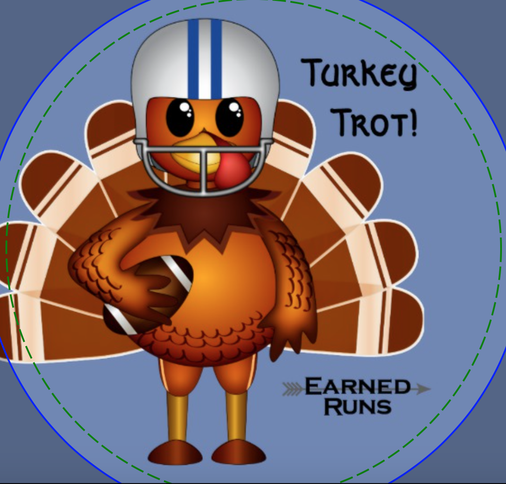
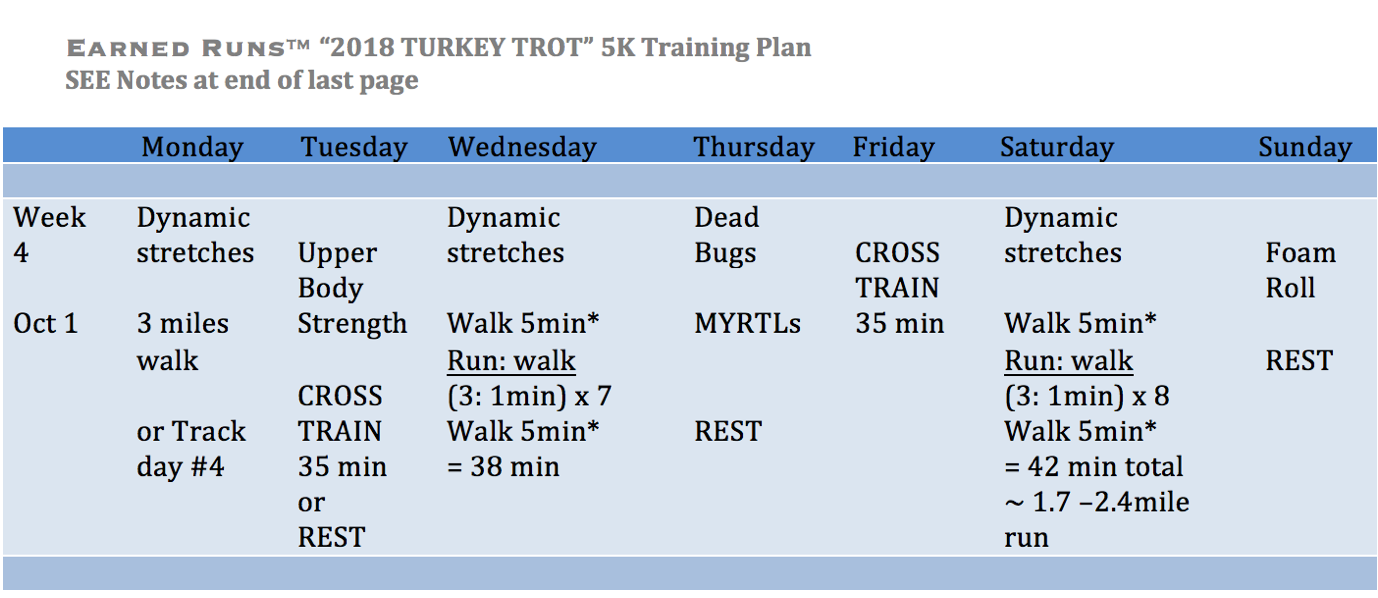
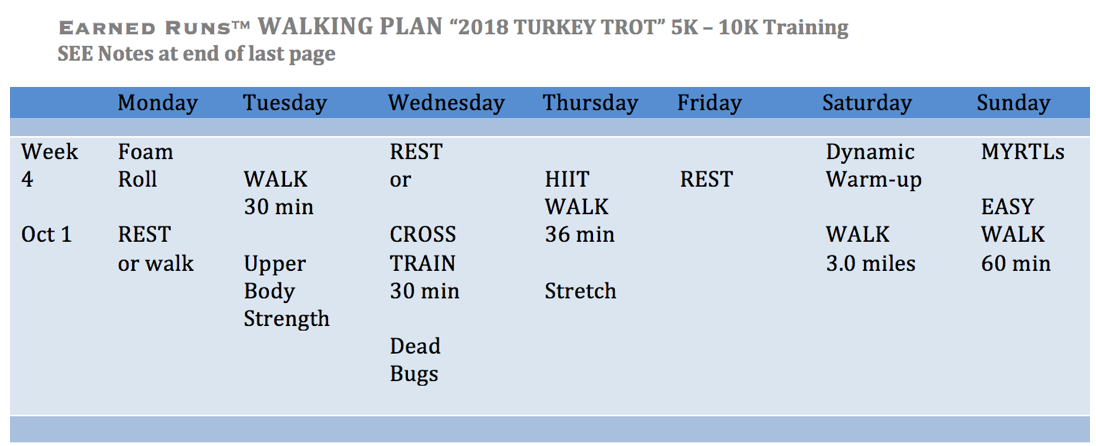
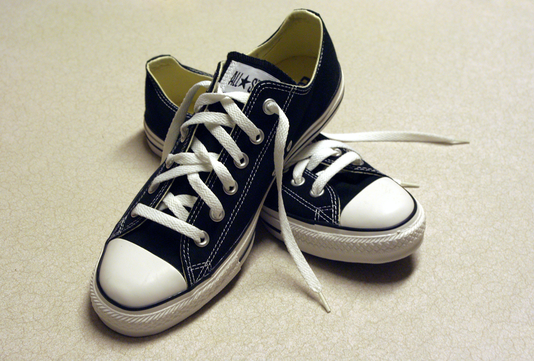
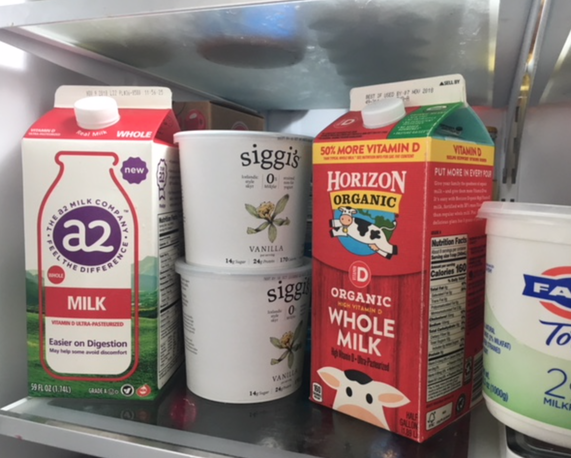
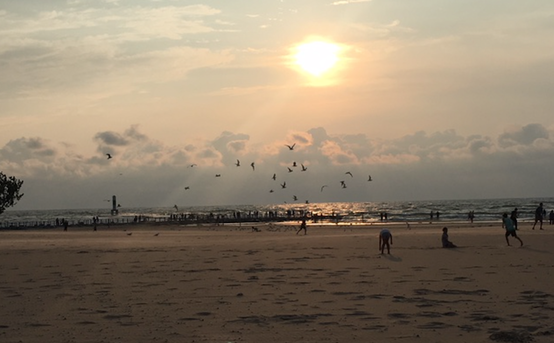

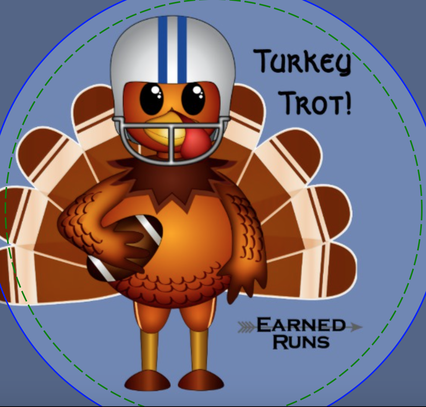
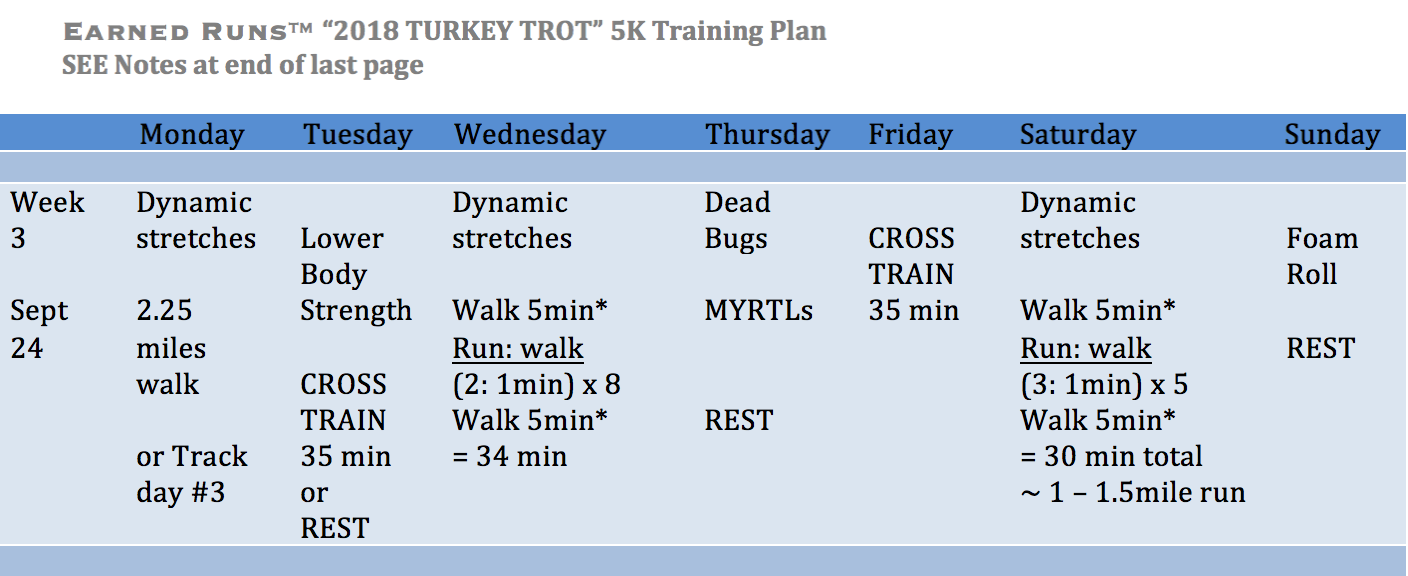
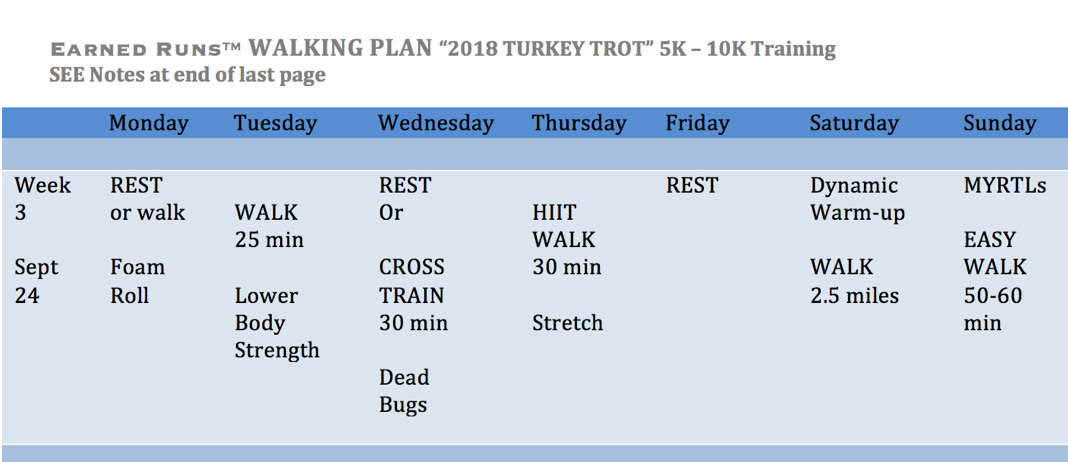


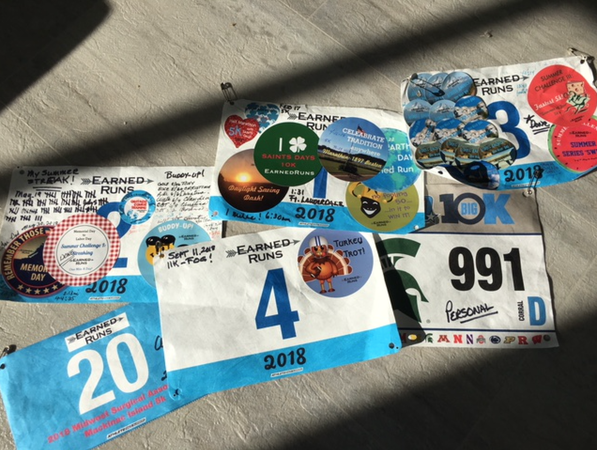


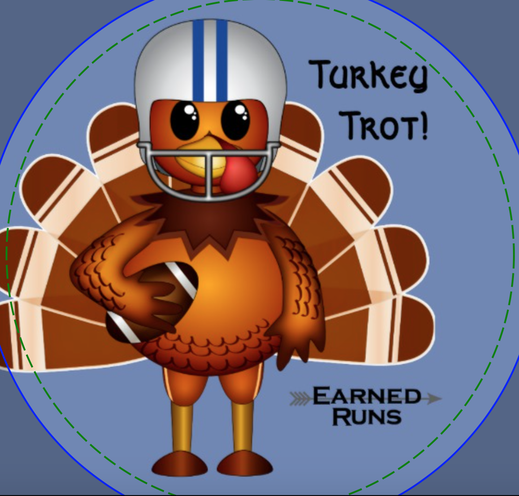
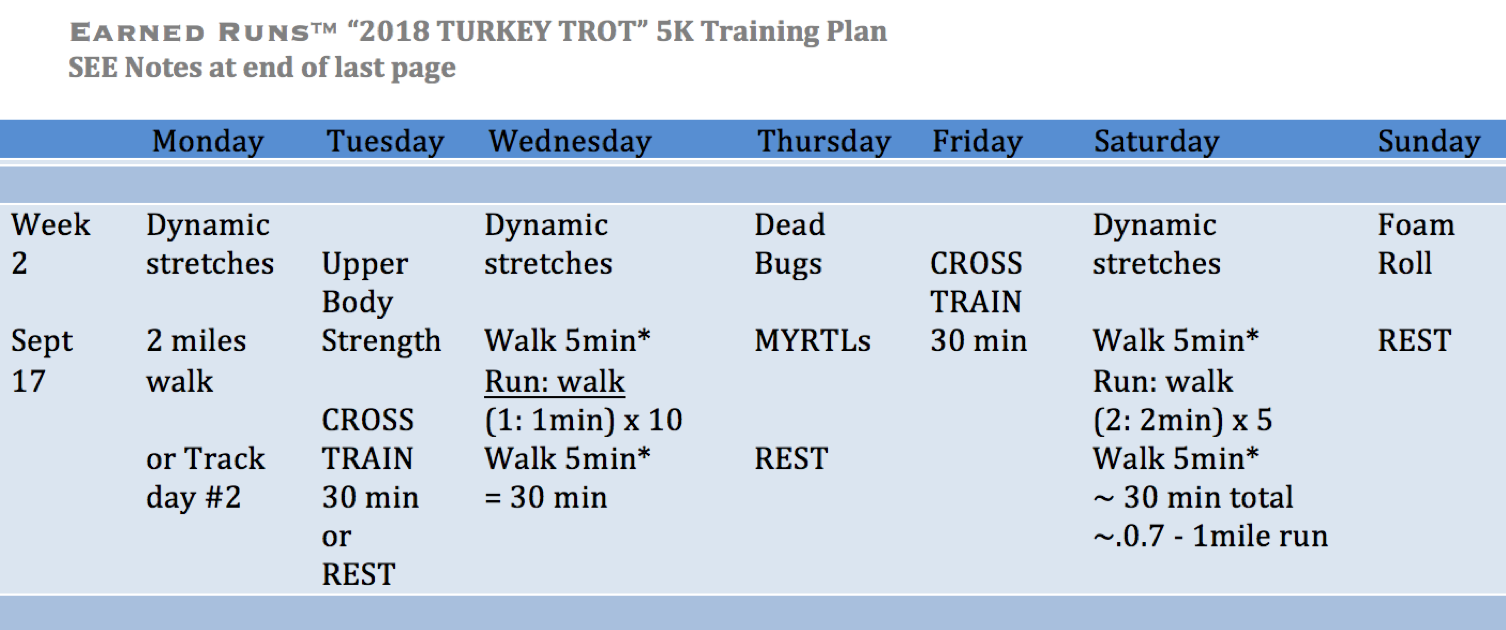
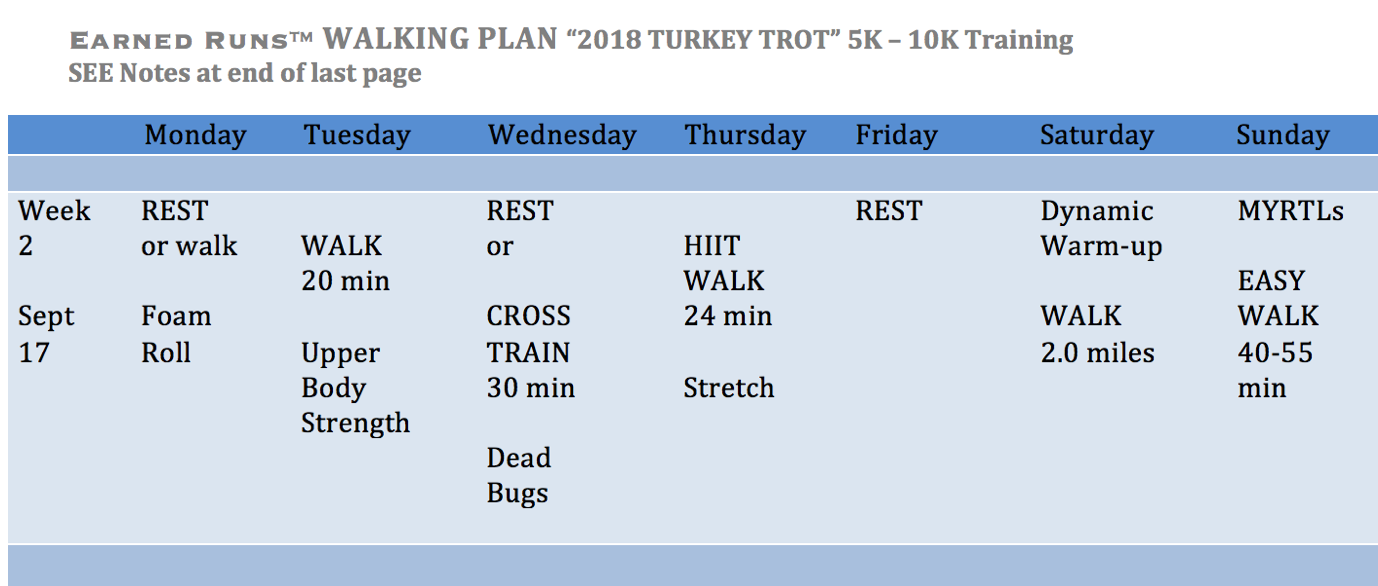
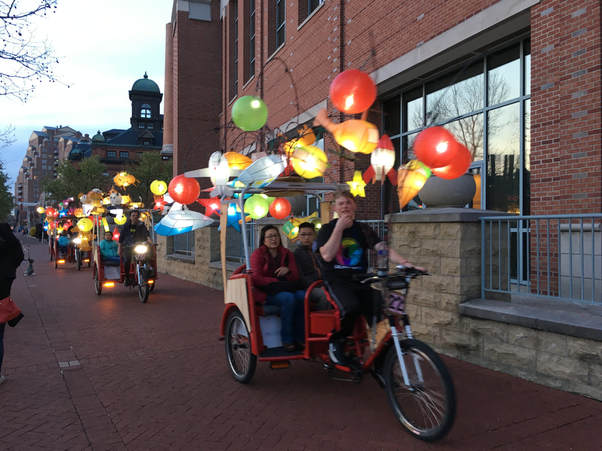


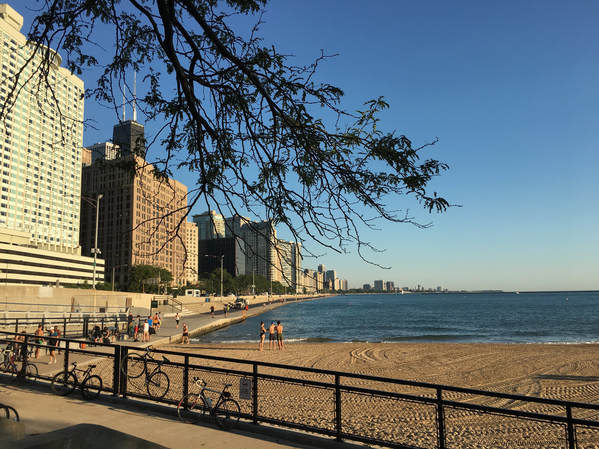
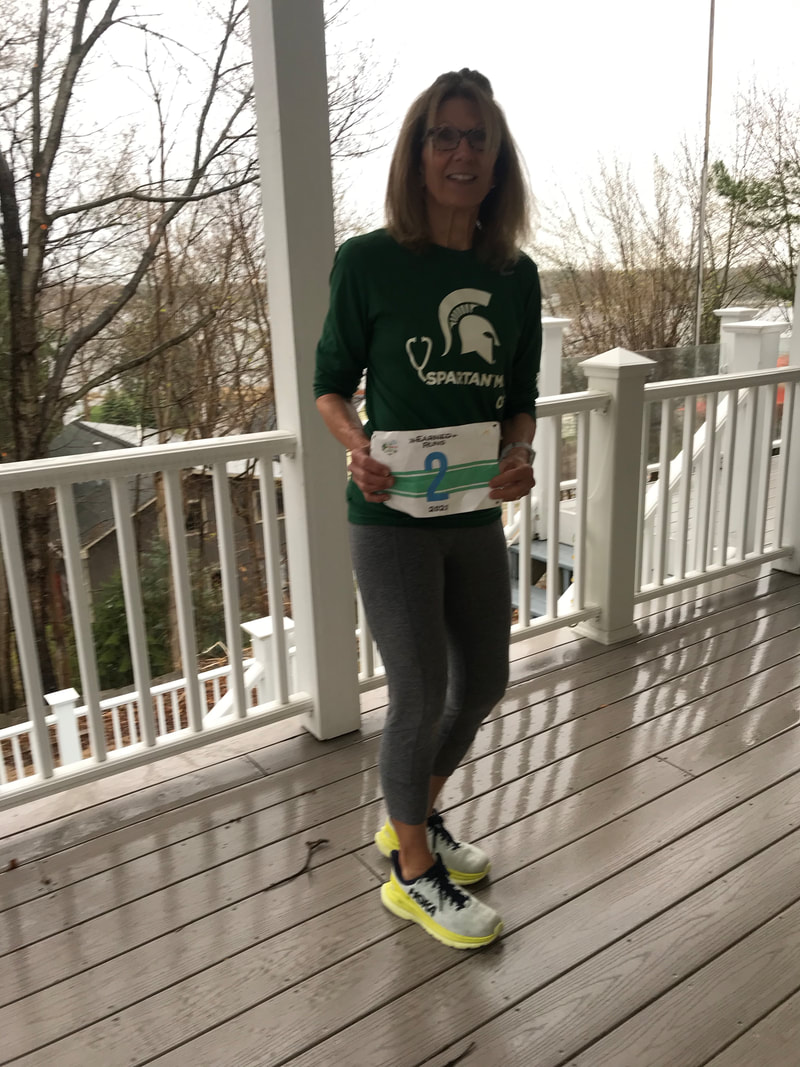
 RSS Feed
RSS Feed